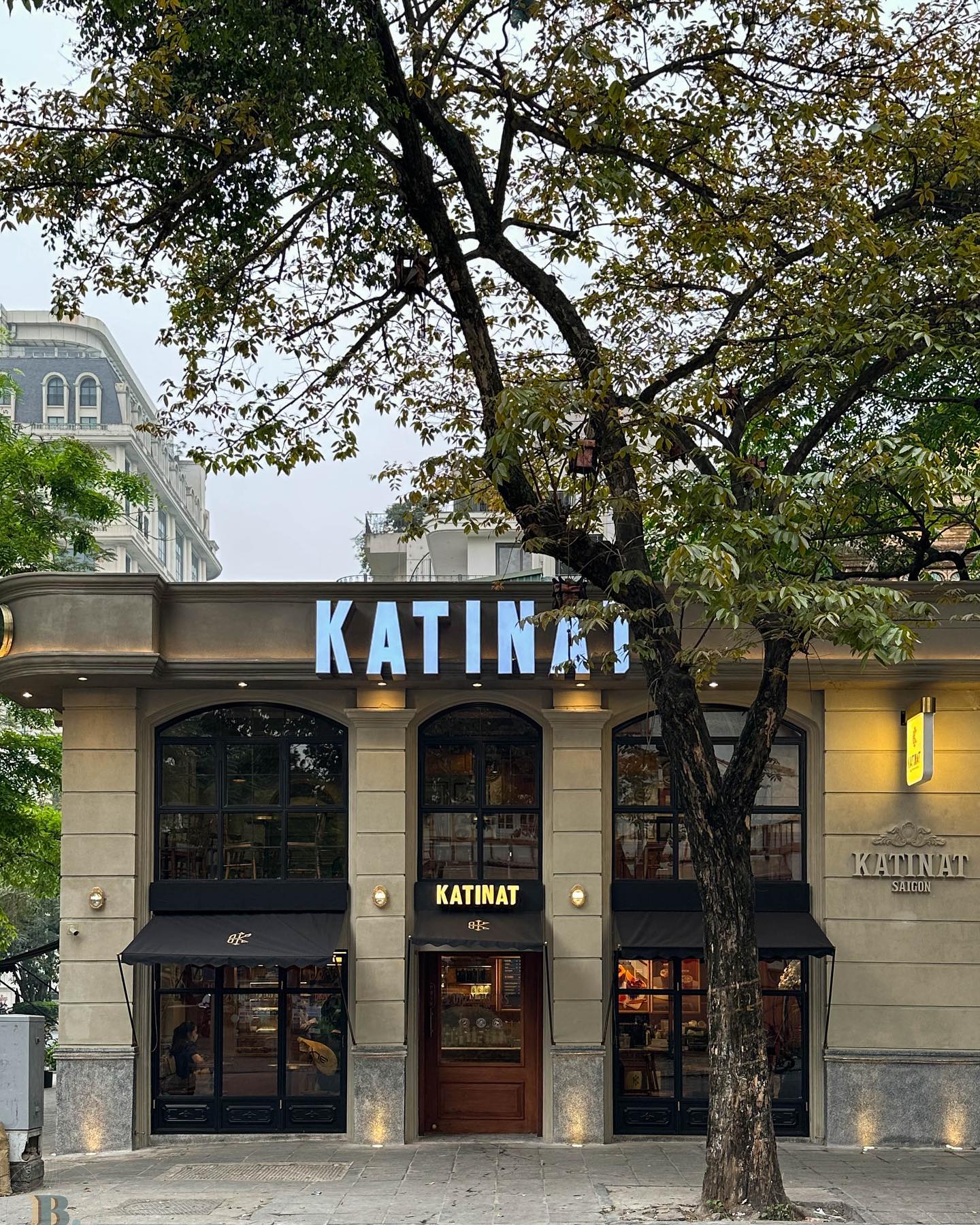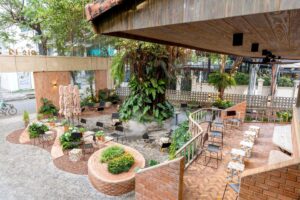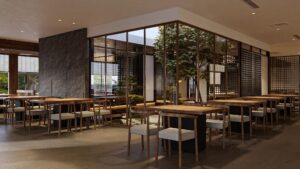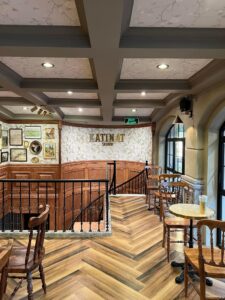Interior design trends in the F&B industry
To achieve success in the food and beverage industry, interior design is the decisive factor in creating an attractive and unique space. In the F&B sector, interior design trends are constantly evolving, meeting customer preferences and providing memorable experiences. This article will introduce the current prominent and popular trends in this industry.
Open and multi-functional space design
Today, customers are looking for not just a place to enjoy food but an overall experience. Open and multi-functional space design is an important trend in the F&B industry. By creating open and flexible spaces, restaurants and cafes can accommodate a variety of activities such as meetings, events and musical performances. This brings comfort, convenience and enhances interaction between customers and the space.
Flexibility is also shown in how to combine different functions in the same area. For example, combining a kitchen with a bar allows customers to eat and drink while also observing the chef at work, creating an intimate and interactive experience. By cleverly using space, F&B design brings a unique and creative experience to customers, satisfying the needs of entertainment and culinary enjoyment.
Use natural and sustainable materials
Using natural and sustainable materials is an increasingly prioritized interior design trend in the F&B industry. The environment and environmental protection are becoming a concern, and therefore, the use of natural and recycled materials is one way to contribute to environmental protection.
Materials such as recycled wood, brick and natural stone are given priority F&B interior design. Recycled wood not only brings a natural beauty and warmth to the space, but also helps reduce the impact on forests and primary forests. Brick and stone are not only highly durable but also create a natural and friendly feeling, creating a close and comfortable space for customers.
In addition to using natural materials, energy and resource optimization is also an important part of sustainable interior design for the food and beverage industry. Natural light and energy-saving lighting systems help conserve energy and create an airy space. Using water-saving devices and waste management are also important factors in creating a sustainable environment and making the most of resources.
Environmentally friendly design also creates a good brand image. Customers are increasingly interested in supporting businesses with a sustainable and environmentally friendly vision. Creating an environmentally friendly culinary and beverage space not only satisfies customers' preferences but also brings awareness and appreciation to businesses. It is an important step forward in building a responsible brand and in line with the sustainability trends of the modern market.
Environmentally friendly design
Interior design in the F&B industry not only creates beautiful spaces but also focuses on integrating environmentally friendly solutions. Water and waste management also plays an important role in this design requirement. Using water-saving devices such as low-flow faucets and extended-flush toilets helps reduce water consumption and conserve precious resources. At the same time, waste separation and recycling processes help reduce the amount of waste entering the environment, while creating a positive brand image, showing the business's commitment and responsibility to protect the environment. environment.
Design SUITABLE FOR CUSTOMER EXPERIENCE
Customer experience is an important factor in the F&B industry. The interior design is created to bring an interesting and unique experience to diners. Use the right lighting, appropriate acoustics, and flexible spaces to create a welcoming and inviting space. Elements such as color, shape and materials are chosen to create a unique and inspiring space. A successful food space not only focuses on providing good food and drinks but also creates an attractive and enjoyable environment for customers to enjoy.
With this design style, sound is an important factor in creating a good customer experience. Appropriate and not too noisy background music helps create a relaxing space and enhances the feeling of comfort for customers. The radio speaker system needs to be designed appropriately, depending on the customer's wishes and needs.
The colors, shapes and materials of the furniture are also carefully chosen to create a unique and inspiring space. Bright colors can create a youthful and dynamic space, while dark tones bring warmth and romance. The shape and materials used also need to be quality and unique, to create a stylish and personalized dining space.






Leave a Reply